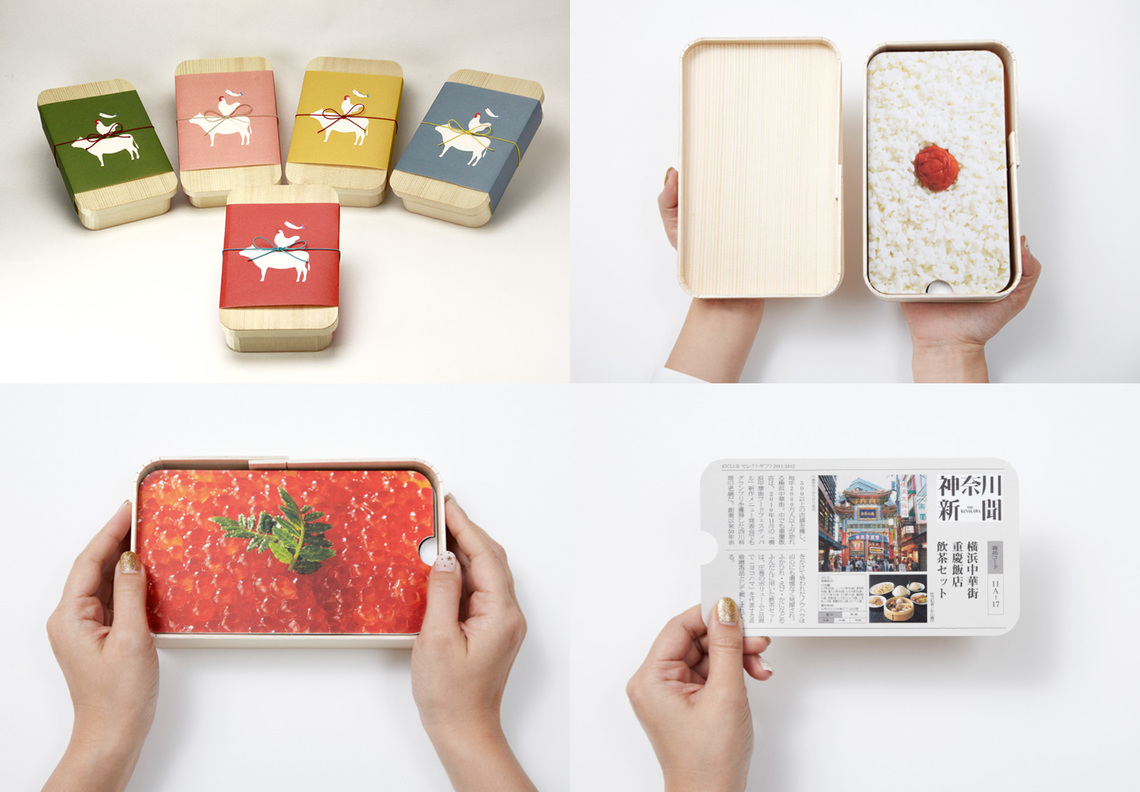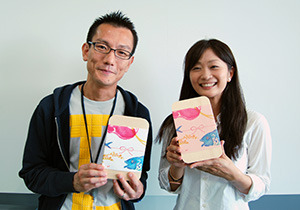It's been several years since I first worked with "Yon'nana Club," an online ordering site where you can discover regional delicacies not yet in the news. It all started when they approached me with the request: "We want to create a catalog gift that feels like Yon'nana Club." Indeed, catalog gifts received as wedding favors or mid-year gifts, whether from department stores or gift shops, all follow the same book format. The contents—beef, ham/sausage, fruit, and tableware—were always the same. We began searching for something that would create a "new connection" between Yonnana Club and its customers.

This is the " Gift Bento." It's a "station bento" where the catalog is a card designed like a newspaper article.
The first keyword we grasped was "travel." While typical catalog gifts tend to focus on specific regions—like Kobe, Matsusaka, Yamagata, and Miyazaki for wagyu beef—Yon'nana Club's selection, curated by newspapers nationwide, guaranteed products from every prefecture. "What if we could introduce each item as if encountered on a journey?" we wondered.
Based on this idea, we scattered around several concrete forms like "train window" and "travel bag." Among them was a design modeled after "ekiben."
Eki-ben truly offers a convenient way to sample local specialties. So, I wondered: Couldn't we design something where you enjoy products selected by each newspaper like side dishes? And wouldn't it be great to present them in the style of a local newspaper article? Through this trial and error, I arrived at the concept: "Enjoy the Newspaper Article."

Beyond this, I created all sorts of other things.
It might seem to deviate from the conventional business wisdom of starting production only after verification leaves no room for doubt. But our actual "messing around mode" involved thinking things through while actually building prototypes.
In "design thinking," a methodology gaining attention for driving innovation, this approach is called rapid prototyping. David Kelly※1, a pioneer in this field, positions it as "thinking with both hands," stating that the level of the prototypes created "doesn't have to be perfect" and "this is good enough."
When the gift bento entered final development based on the "Enjoy the Newspaper Article" concept, a new wall emerged: "What would be a station bento-like package worthy of a catalog gift, say, costing 10,000 yen?" Solving this was the later "Polishing Mode"—the art director's skill.
Incidentally, while the design thinking process is sometimes explained as "understand/empathize → define the problem → generate ideas → prototype → test"※2, "mess around mode" involves moving back and forth between defining the problem and generating ideas while prototyping. This makes it a highly demanding task.

Copywriter Junpei Iwata and Art Director Maho Kudo.
They are holding the new version.
Last time I wrote about the copyw riter's trial and error process, which is also a form of rapid prototyping. Instead of actually making a physical product, you experiment with realistic "words" that represent the intended output.
Thanks to this approach, "Gift Bento" sold over 15,000 sets in just under two years and became a staple product for Yon'nana Club. Perfect for summer and year-end gifts, or even as a small token of appreciation (lol).
This ended up sounding like a bit of an advertisement, but next time, let's talk about the "Discovery! Mode" that lies ahead.
Enjoy!
※1 A key member of IDEO, the firm that pioneered design thinking.
※2 From Koji Mitani's "The Complete History of Business Strategy" (Discover Twenty-One, 2013). However, the book "The Invention of the Company!" (Hayakawa Publishing, 2002) by IDEO's key members, Tom Kelly, and others, states the process as "understanding → observation → visualization → evaluation and refinement → realization." In this context, the "messy mode" primarily corresponds to the visualization stage.





